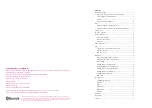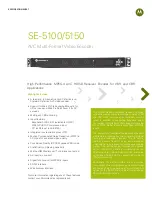
Introduction 11
CG635 Synthesized Clock Generator
Figure 3: Maximum recommended CAT-6 cable length as a function frequency.
Maximum Recommended CAT-6 Cable Length vs. Frequency
1
10
100
1000
1
10
100
1000
10000
Frequency (MHz)
M
a
x
im
u
m
CAT
-6
Cab
le
(
m
et
er
s)
PRBS and Clock Option
An optional pseudo-random binary sequence generator for the CG635 is also available
from SRS. If installed, both the PRBS data and the clock are output as LVDS levels on
rear-panel SMA connectors.
A Pseudo-Random Binary Sequence (PRBS) generator is used for testing data
transmission systems. A typical arrangement is to display an “eye pattern” on an
oscilloscope by triggering the oscilloscope with the clock while displaying the (random)
data after it passes through the data transmission system. An “open” eye pattern is
necessary for reliable data transmission. The eye pattern “closes” from the left and right
with jitter, and from the top and bottom with insufficient channel bandwidth, increasing
the likelihood for transmission errors.
The most common way to create a PRBS generator is to use a linear shift-register,
feeding the input of the shift-register with the exclusive OR of two (particular) data bits
as they shift through the system. The CG635 uses a 7-bit ECL shift register that provides
a pseudo-random bit sequence which repeats after 2
7
– 1 = 127 clock cycles. The data bit
stream is described by the polynomial x
7
+ x
6
+ 1. It satisfies many criteria to qualify as
“random”; however, it does repeat itself (exactly) after 127 clock cycles. Another
departure from randomness is that the longest string of “1’s” is seven in a row, while the
longest string of “0’s” is six in a row.
















































